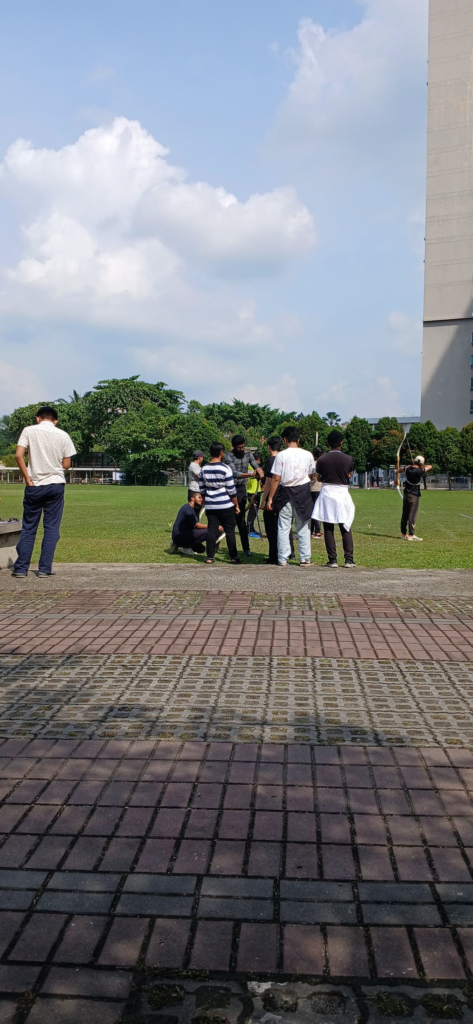This course provides university students with basic knowledge of archery. Students are introduced to fundamental skills in archery. The course is conducted using a co-curricular service-learning approach, where students are required to apply their co-curricular knowledge in ways that can benefit the community in various forms, such as clinics, campaigns, the development of archery in the community, and other suitable activities determined by the student group in consultation with the lecturer and coach. Additionally, students will have the opportunity to engage in knowledge transfer activities with the community by addressing local community issues. Students will also have the chance to communicate with other organisations that can assist in the success of the community project in various forms, including securing financial resources.
Guideline for Paperwork for Archery Class: Community Service in Hulu Langat
1. Title Page:
- Title of the Program: Community Archery Class and Service Project in Hulu Langat
- Date of Proposal Submission
- Name of Proposing Organization or Individual
- Contact Information
2. Introduction:
- Briefly introduce the purpose of the archery class and its connection to community service.
- Explain the specific site in Hulu Langat where the class will be held and its significance.
- State the goals of combining archery with community service, such as fostering a sense of community and encouraging healthy recreational activities.
3. Program Objectives:
- To introduce students to basic archery techniques while volunteering for community improvement.
- To enhance teamwork and sportsmanship through collaborative projects.
- To promote STEM (Science, Technology, Engineering, Mathematics) learning through archery-related activities.
- To engage students in promoting environmental awareness while improving physical and mental well-being.
4. Community Service Activities:
- Archery Class: Weekly sessions to meet the objectives as mentioned above.
- Volunteer Cleanup Events: Organize days where students will participate in community cleanup efforts (e.g., cleaning a local kampung).
- STEM Integration: Incorporate lessons on the physics of archery, focusing on aspects such as trajectory, force, and aim.
5. Implementation Details:
- Date and Time: Establish a schedule for weekly archery classes and community service events.
- Venue: Identify and confirm the location for the archery classes (e.g., local community center, field) and cleanup sites.
- Number of Participants: A maximum of 30 participants, ensuring manageable group sizes for both classes and cleanup initiatives.
- Instructors: Recruit a qualified archery coach and volunteers to oversee cleanup events.
- Safety Measures: Outline safety procedures and equipment needed for both archery and cleanup activities.
6. Approval Process:
- Detail how the proposal will be submitted to relevant authorities (e.g., UGS) through required forms.
- List any necessary permits for conducting activities in public areas or community sites.
7. Financial Implications:
- Provide a budget that includes:
- Equipment rental (e.g., bows and arrows).
- Instructor fees.
- Materials for cleanup operations (e.g., trash bags, gloves).
- Marketing materials to promote the event.
- Justify expenditures as essential for facilitating quality training and community development.
8. Expected Impact:
- Discuss potential benefits for participants, including improved archery skills, heightened awareness of community issues, and enhanced collaboration among students.
- Outline how participants can apply skills developed in the archery class to community initiatives and competitions.
9. Evaluation Plan:
- Define criteria for success, including:
- Attendance and participation rates in both the archery class and community cleanup events.
- Participant feedback through surveys assessing their learning and experience.
- Analysis of improvements observed in the local kampung during cleanup efforts.
10. Conclusion:
- Summarize the importance of the community archery class and its associated service project.
- Encourage stakeholders and potential participants to support and engage in the initiative for the benefit of both students and the Hulu Langat community.
11. Appendices:
- Include additional information such as a detailed schedule, promotional materials, or safety guidelines relevant to the archery class and community service project.



